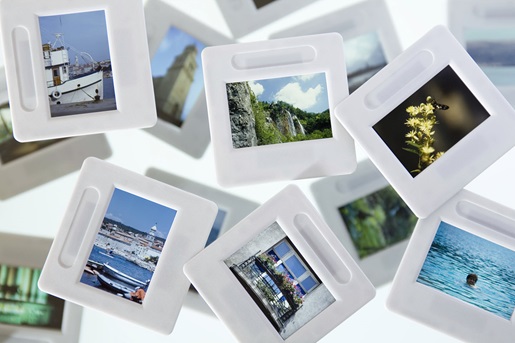This step-by-step guide explains the entire scanning process
Need to scan a document using your Mac but don’t know where to start? Don’t worry. This guide breaks down how to scan on Mac into five easy-to-follow steps so you can complete the job like a seasoned scanning pro.
Got something else that needs scanning? Check out our comprehensive guide, "How to Scan Just About Anything."
Jump to a section:
How to scan on Mac FAQs
Will any scanning device work with my Mac?
While many consumer scanners are Mac compatible, it’s usually a good idea to buy and use devices particularly suited to these computers.
Did You Know?: Ricoh scanners are consistently ranked among the best document scanners for Mac computers. Click here to learn more.
Do I need to buy an external dongle to connect a scanner to my Mac?
You may need to purchase an adapter to connect your scanner to your Mac. For instance, a Mac with only USB-C ports will need to use a multiport adapter to connect directly to a USB scanner.
After I've scanned the document, how do I save and organize the file on my computer?
Step 5 of our list covers how to choose where your document is saved. You can find your file using your Mac’s search function and make additional changes (file name, location, etc.) from there. Skip ahead if you already know how to scan on Mac and are ready to move to file organization.
How to scan on Mac
Step 1: Open your scanner
To start the scanning process, you’ll need to first find Apple’s native scanning application, Image Capture.
You can find Image Capture in your Applications folder or by using the search function in the upper left hand corner of your computer's desktop. Image Capture could also be located in your Dock if you or others placed it there. Click on the Image Capture icon to open the application.
If your scanner is connected to your computer directly, you’ll find it under the “Devices” section of the software. If it's a part of your network — like many are — you’ll find it under the “Shared” section. Click on the scanner to open it.
Step 2: Select your scan settings
For most scanning jobs, you’ll want more settings options than are available in the default view. Click “Show Details” to reveal the full set.
Perhaps the most important setting to get right is the scan mode. The correct scan mode depends on whether you're using a flatbed scanner or document feeder scanner for this job.
The main difference you’ll notice in the application is that if you’re using a flatbed, then the application will display a preview of the document you’re scanning — which makes seeing the effect of the rest of your settings on the image much easier.
Click on the mode you need (“Flatbed” or “Document Feeder”) for the type of scanner you’re using.
Other important settings include:
- Color: You’ll find the color settings in the “Kind” section. There are three options: “Text,” “Black & White,” and “Color.” The “Text” setting is only black and white, and it’s great for text-only documents. The “Black & White” setting is actually grayscale, and it’s ideal for documents with text and images that you don’t need or want to have in full color. The “Color” option is for full-color scans. It’s the highest quality setting and the one you’ll probably want to use for most jobs — especially for documents with photos or logos.
- Resolution: The “Resolution” setting determines the fidelity or crispness of the scan and is measured here in DPI (dots per square inch). For most jobs, the default resolution of 300 DPI is the way to go. If you’re just scanning a text document where image sharpness isn’t critical, 200 DPI will work. But if your scan needs to capture every detail of the document, 400 DPI and above is probably your best bet.
- Size: If you’re scanning a document of a standard size, uncheck the “Use Custom Size” box (right below “Resolution”) and select the format in the “Size” section that matches your document. If you’re scanning a document of unusual size, keep the “Use Custom Size” box checked. Then click “Overview” and manually adjust the boundaries of the scan using the dotted line bounding box overlaid on the image displayed in the preview. It’s important to note that custom adjustment is only possible in “Flatbed” mode.
Step 3: Finalize scan details
You can control where your scan is saved by using the option in the “Scan To” section. The most common destinations are “Desktop,” “Photos.app,” or “Mail.app.” “Desktop” will save the scanned image to your computer's desktop. “Photos.app” will save the scanned image to your Photos folder. And “Mail.app” will open up the Mail application after scanning with the file attached to an email draft.
Then, you can title your scan file using the “Name” section. When coming up with a name for your scan, it’s a good idea to follow best practices like eliminating spaces, avoiding special characters, using consistent names, and keeping them short.
The file type setting is as important as the scan mode setting, because it determines the output format. There are numerous options in the “Format” section, but you likely only need to use one of two. If you want your document scan to produce an image, click JPEG. If you want your document scan to produce a document, click PDF. If it's a multipage document that you want all in one PDF file, check the “Combine into a single document” box.
Step 4: Optimize your image
You can use the “Image Correction” section to optimize the quality of your scan. The “Automatic” setting does the enhancement for you, while the “Manual” setting lets you adjust the correction settings using manual controls for tint, temperature, saturation, and more.
Step 5: Scan your document
Give all your settings a quick once over to ensure they’re where you want them. If everything looks good, click the “Scan” button in the bottom right-hand corner of Image Capture.
After you scan your document, Image Capture will generate a “Scan Results” window showing your scanned file. Click on the magnifying glass icon to get the full details on the file’s location. Another easy way to find your file is using your Mac’s search function.
Our recommendation: RICOH ScanSnap iX1600
Those in the market for a Mac-compatible document scanner have no shortage of options. We take great pride in having spent the last 50+ years researching, designing and developing some of the most advanced and powerful electronics in the world, including our line of award-winning, easy to use, one touch ScanSnap scanners.
If you’re looking for a performance Mac scanner that will never let you down, our flagship model — the ScanSnap iX1600 — should be at the top of your list. Instead of Image Capture, the ScanSnap iX1600 uses an even simpler scanning software solution with one touch-screen scanning that makes the whole process as easy as possible.
Fast, powerful, and Wi-Fi-enabled, the ScanSnap iX1600 is considered by many to be the best Mac document scanner available. Click here to learn more or shop the rest of our production scanner line.
Note: Information and external links are provided for your convenience and for educational purposes only, and should not be construed, or relied upon, as legal or financial advice. PFU America, Inc. makes no representations about the contents, features, or specifications on such third-party sites, software, and/or offerings (collectively “Third-Party Offerings”) and shall not be responsible for any loss or damage that may arise from your use of such Third-Party Offerings. Please consult with a licensed professional regarding your specific situation as regulations may be subject to change.













